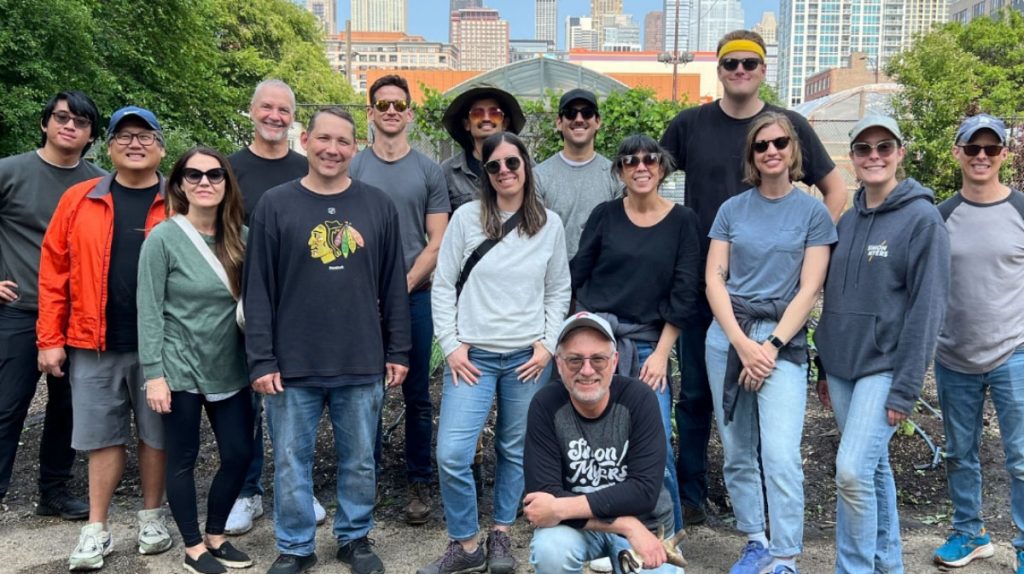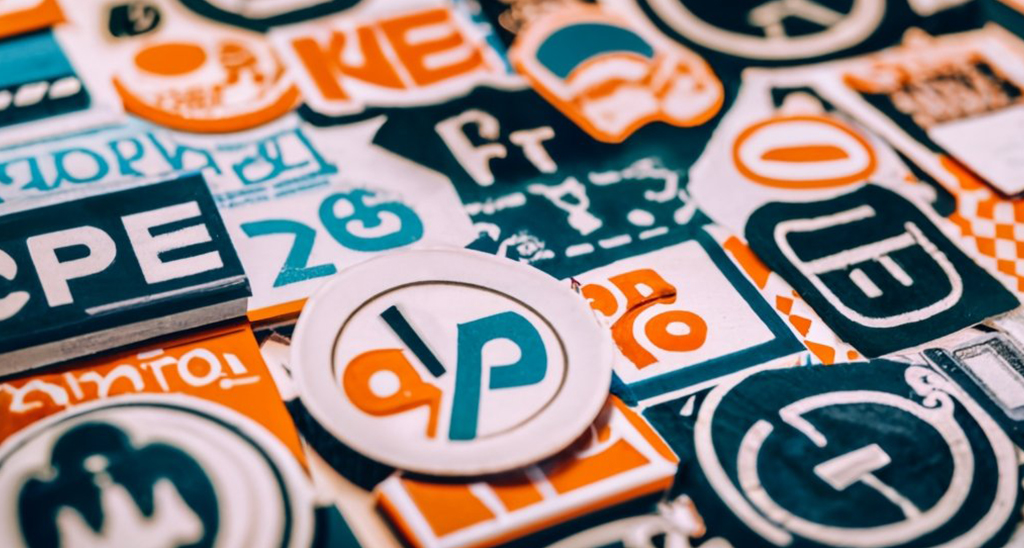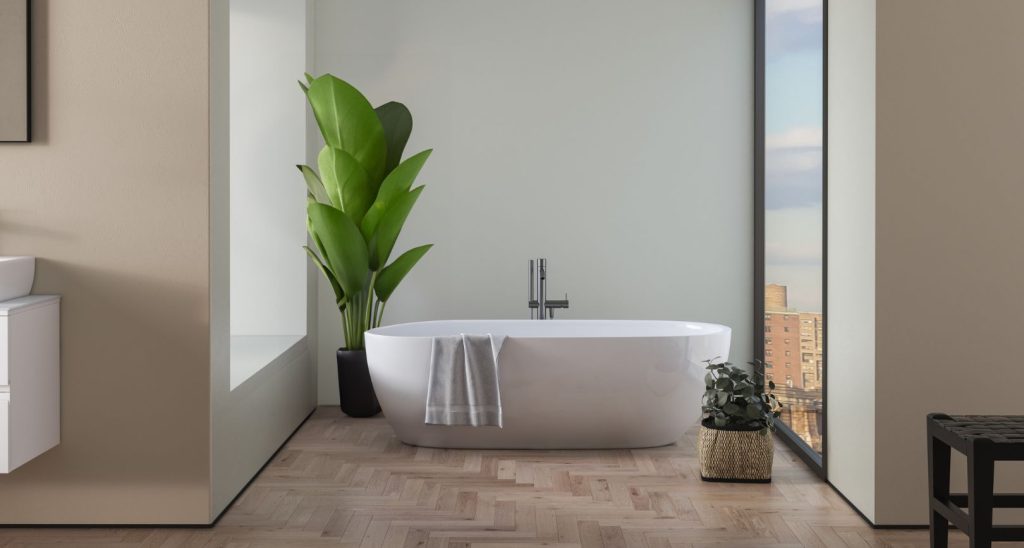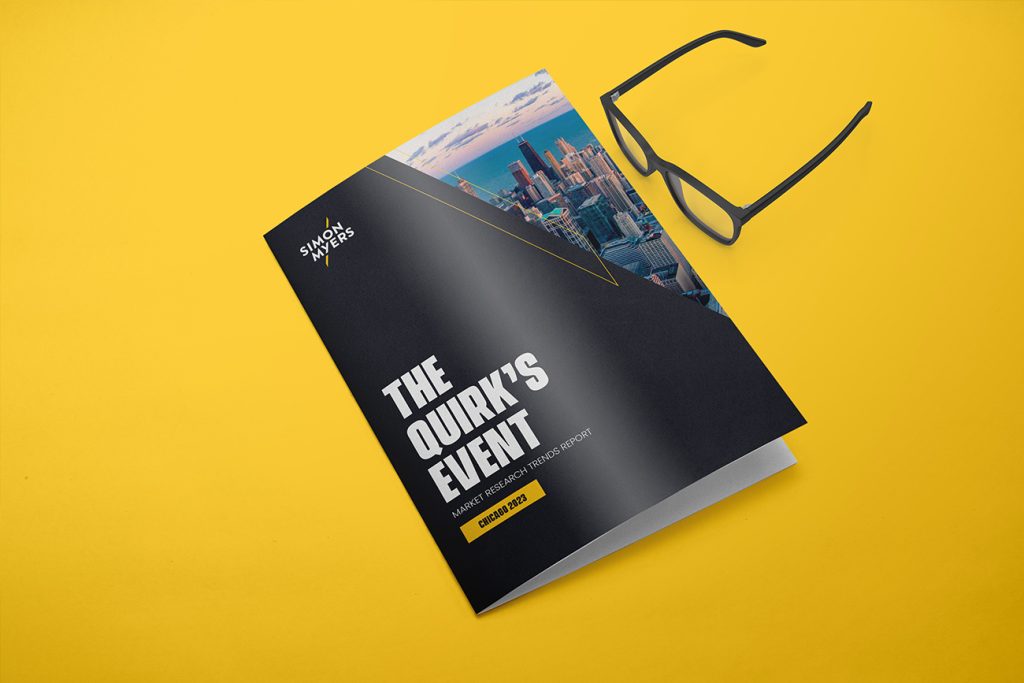Navigating the Political Advertising Takeover
With VP Kamala Harris officially securing the Democratic nomination, the stage is set for a highly captivating election season between Harris and Donald Trump. While the candidates hold vastly different viewpoints, both parties, for the most part, will employ similar marketing strategies to sway voters come November. The core goal of mobilizing support remains the same, however the methods and tools used have evolved significantly over time as digital platforms are increasingly becoming the driving force of all marketing campaigns.
Early 20th-century campaigns utilized newspapers and radio, with the 1924 election pioneering radio broadcasts. The 1952 election introduced political ads on television, exemplified by Eisenhower's "I Like Ike'' campaign. The post-Watergate era saw a rise in sophisticated strategies, including targeted marketing and negative ads. The 2008 election marked a digital revolution, propelling Barack Obama from a lesser-known senator from Illinois to the White House by leveraging social media, email marketing, and data analytics to effectively engage supporters. In today’s digitally connected age, it’s fair to say that the way in which campaigns reach potential voters, donors, and supporters has come a long way. (millercenter) (britanica) (standard.edu)
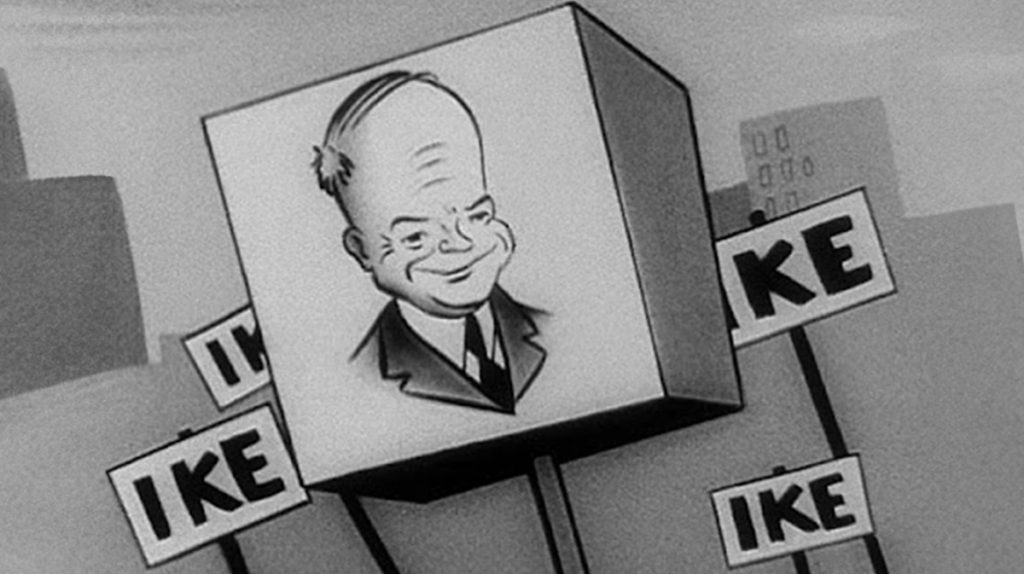
“I Like Ike” 1952 U.S. presidential campaign commercial
In the 2020 election, nearly $9 billion was spent in the battle for the White House, double the amount spent in 2016 (cnbc). This year’s political ad spend is forecasted to land between $10-$12 billion, a 13%-to-30% increase from the 2019-2020 election cycle (collectivemeasures).
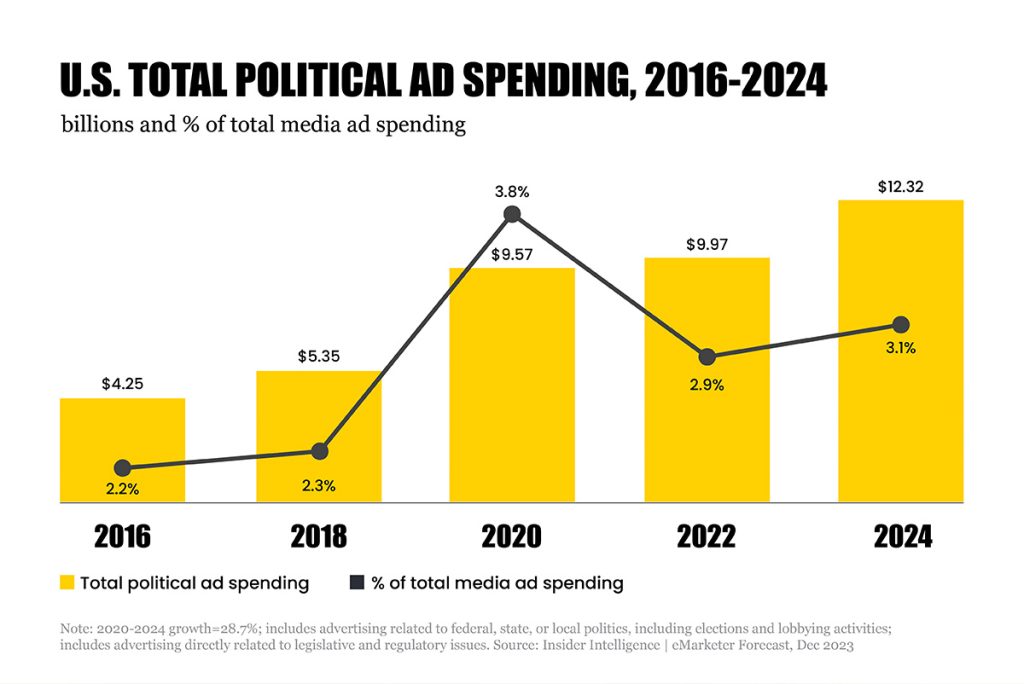
If you’re a marketer running paid media this year, we have some considerations and recommendations to help you navigate this election cycle, stretch your budgets further, and fine-tune your tactical plans. Also, if you’re a marketer in the home improvement space, you should be especially mindful of rising costs to reach your target audience. Political ads target homeowners more frequently, as they’re more desirable to reach due to their higher voter turnout rates. (nlic.org)
Inventory
For political advertisers, video is king. This year will see a high demand for ad space on connected TV (CTV), linear TV, online display video, and social platforms. CTV will play a major role in reaching voters and will account for 45% of all digital political ad spend in 2024. In fact, U.S. political CTV ad spend is projected to climb a staggering 600% from 2020 to 2024, rising to $1.56 billion. This significant shift is likely due to several factors: political advertisers adapting to how potential voters consume media, the introduction of ad-supported tiers by streaming services, improved broadband access in rural areas, and marketers recognizing the great potential of CTV. (thecurrent).
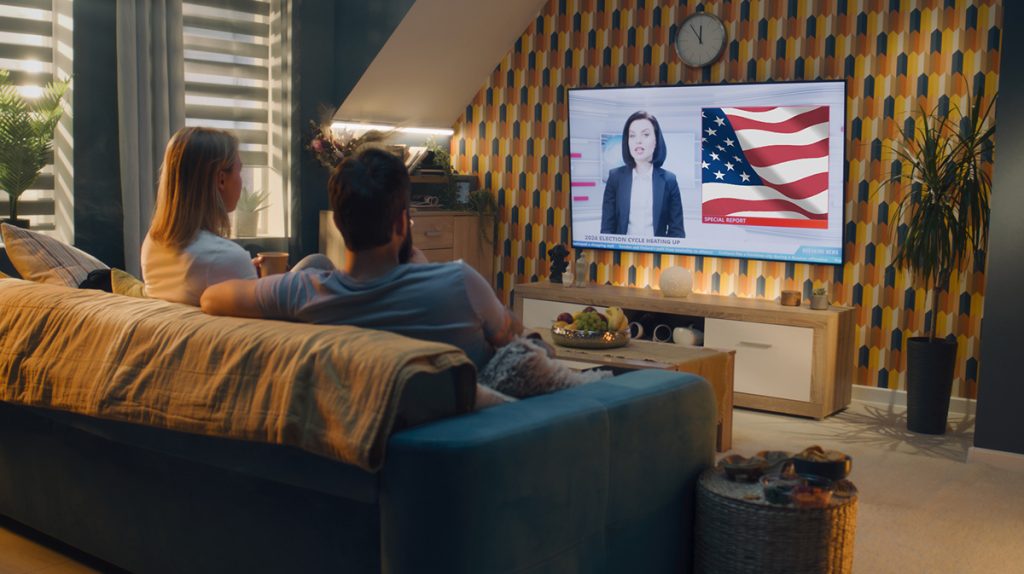
If video is king, then traditional television is the crown, still reigning supreme in the media mix model. Traditional media, which consists of linear TV, is expected to only grow 7.9% from 2020, however it will continue to capture the largest share of the budget, accounting for 71.9% of total ad spend (reuters). Additionally, linear television must adhere to the FCC’s Equal Time Rule, which mandates that if a candidate buys ad time, the channel must offer equal time to other candidates. The rule actually does not mean "equal time" but rather comparable time. The rule mandates that opposing candidates must be given the chance to purchase the same amount of time at the same rate during similar times of the day, which will likely further crowd the channel (dwt). With traditional media still commanding much of the political landscape, many will be vying for a share of the crown.
For non-political marketers looking to avoid crowds, diversification in your advertising channels to buffer against the surge in political ad rates will be key. You should consider investing in environments that don’t allow political ads such as Netflix, Disney+, Xandr, and TikTok. (fathomdelivers).
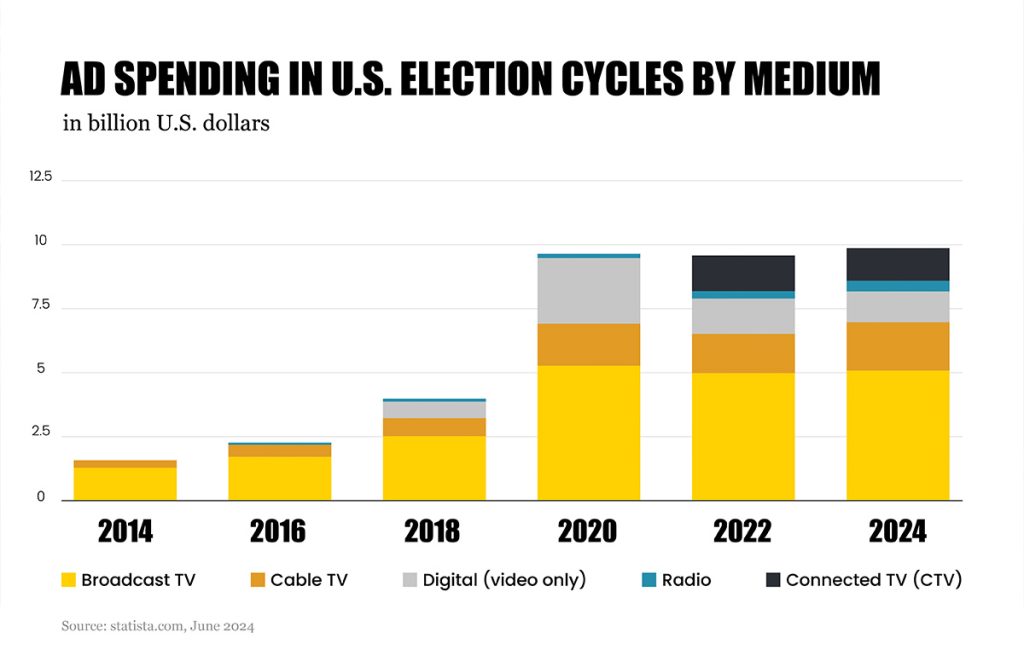
Timing
According to Basis platform, in the 2022 and 2020 elections, about 50% of the year’s political dollars ran in the 30 days leading up to the election, with 25% running in the ten days leading up to Election Day. It’s important to keep a close eye on ad costs during this period and it might even be worth completely pausing paid media between October 26th and November 5th.
Where
For the presidential election, there are about seven states that will be hotly contested and will see an increased proportion of presidential campaign ads:
- Arizona
- Georgia
- Michigan
- Nevada
- North Carolina
- Pennsylvania
- Wisconsin
If you’re a marketer running a national campaign, it might be wise to disinvest in these states as CPMs and overall ad costs are likely to rise.
Conclusion
Hopefully, these tips will help you adapt your marketing plans to account for this year’s election cycle. To summarize, you should avoid spending in the channels most impacted – if possible, be mindful of timing, and use geo-targeting to optimize your approach.
